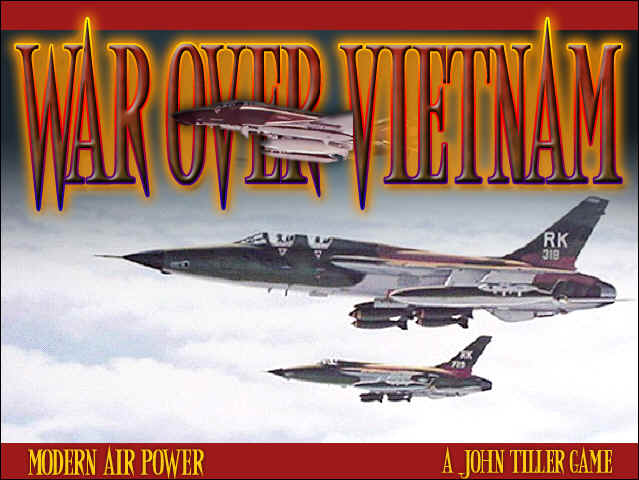Modern Air Power – War Over Vietnam – Game Review (PC)
For many military strategy gamers, it all boils down to knowing if you have the knowledge, skills and abilities to make a mission a success through our own planning and execution. For many years, the main fighting force used have been ground forces, but HPS Simulations has just splashed that trend with its recent release Modern Air Power: War Over Vietnam.
As the title says, War Over Vietnam is set in the wild blue yonder thousands of feet over the heads of the locales of such recent game releases as Battlefield Vietnam and Men of Valor. A tutorial and 21 theatre-level air operations follow the history of the US Navy and Air Force from August ’64 through December ’72 as they fought against what at the time was the greatest air defense system on Earth. Missions include such notable examples as Operation Pierce Arrow, Operation Pocket Money, and, of course, Operation Linebacker.
{default}As stated by Gary C. ?Mo’ Morgan in the games’ campaign notes: "The Modern Air Power series of games now fills a void in computer strategy gaming that has been overlooked for over a decade, despite the abundant preponderance of cockpit-view, flight simulator format computer games that cover the entire century of manned flight."
Gameplay/Replay – 3 stars
War Over Vietnam looks and plays a bit like an after actions review at the Top Gun school. Looking down on your aircraft, you have a view of the entire area of operations. The game can be played from a historical learning standpoint, where you can simply unpause the action and let your aircraft play out what they have been assigned, in accordance with the mission brief given at the start of each scenario. Or, you can delete the assigned flight plans and set your own, from scratch.
Typical gameplay action.
From what I have learned, the gameplay is best done with a combination of both; letting the aircraft fly their flight plans until first contact, then reacting to what obstacles your aircraft encounter. That’s assuming you play with the fog of war (FOW) on. If you play with FOW off, you have a great intelligent preparation of the battlefield, or a great cheat, depending on how you look at it.
As mentioned, almost every scenario begins with your aircraft flying pre-set paths, at least as far as to their assigned targets. However, you’ll need to actively set such items as a return flight path (beware the Auto Return setting), Auto Fire, Auto Intercept, Chaff deployment, speed and altitude.
Altitude reference.
Each aircraft is, of course, best used in the role it was designed for: F-4 Phantom II for combat air patrols, F-100 Super Sabre for close air support, RF-101 for recon, F-105 Thunderchief for tactical strikes, and so on. You’ll also need to know what the ordnance attached to your aircraft is, and what it too is best designed for. If you are new to air combat, War Over Vietnam does a good job of teaching you about each, either in game or out.
Fighter aircraft are not the only ones to be found in War Over Vietnam. There’s plenty of support craft available, including KC-135 refueling tankers, EB-66E radar jammers, and EC-121 long-range radar aircraft. You’ll even find HC-130’s and the infamous Jolly Green Giant helicopter capable of rescuing downed pilots, which I seemed to do a lot of.



